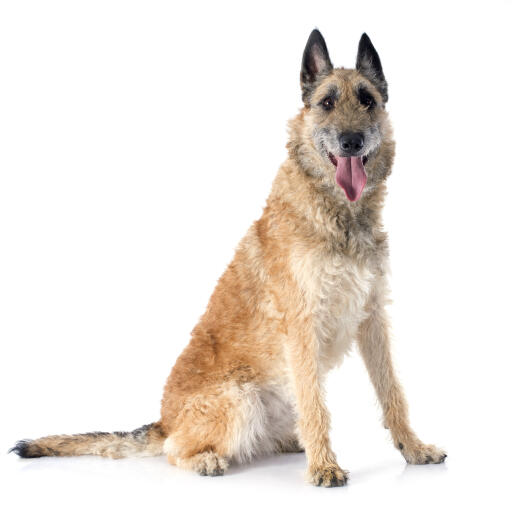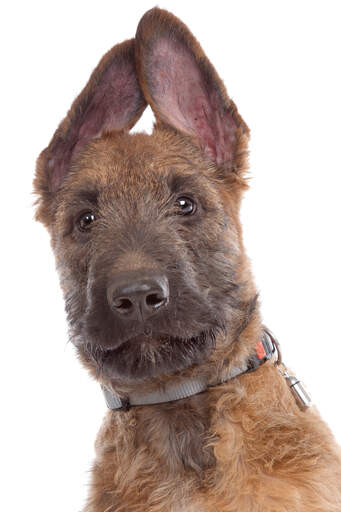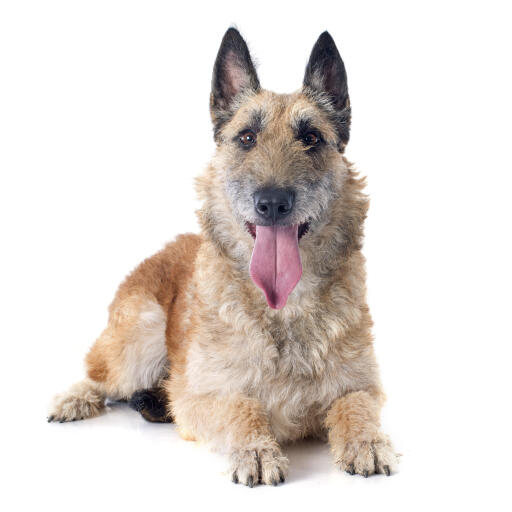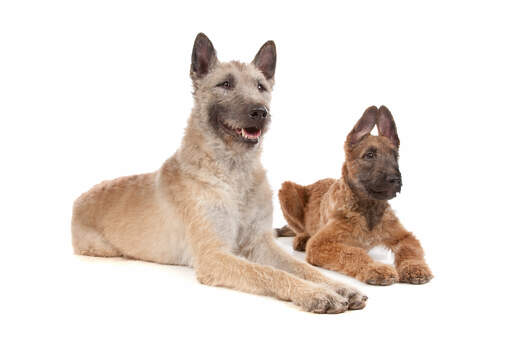Belgisk hyrdehund (Laekenois)




History
The Laekenois originated in Belgium and is classed as a herding breed. They would herd sheep and were also adept at guarding - mainly linen that was hung out to dry at Royal courts. During the First World war, the bred was used as messenger dogs where their true intelligence was realised. They are the oldest of the four Belgian shepherding breeds and also the rarest.
Behaviour
The Laekenois is an alert, loyal and protective dog who thrives on working with people. They are most commonly used by Police forces and as protection dogs by security firms, but are equally well suited as family pets. They can tend to herd small children, but this is mainly down to incorrect rearing and insufficient training when the dogs are puppies. They need very early socialisation to get them used to people, different places, sounds and situations. They are fine with other dogs and cats in the home if introduced at an early age. They can be wary and suspicious of strangers at first, this is down to their inherent breeding as a guard dog. If you are their top dog, they should accept anyone that comes into your home.
Being used as a Police dog, drug sniffing breed and in a variety of professional areas, the intelligence of the Laekenois is obvious. You can see their minds working things out and they do need to be kept mentally active. They do not do well with harsh correction of training methods; they want to please you and will try their best. Shyness or aggression can be associated with the breed, so very early socialisation is vital if you would like to own a Laekenois. They are dependable, yet fearless when they need to be and require a strong leader to show they who is boss. Play works well, as does positive reinforcement and a loving, affectionate approach to their learning. They can excel at agility, flyball, herding, obedience and protection competitions.
Laekenois needs lots of exercise and will soon become destructive if they don't get it. They like to be close to you and are usually fine off lead in a secure area - recall is not a problem. They make good jogging partners and really need at least an hour of strenuous exercise a day to keep them happy and physically stimulated. Given the chance to run around, play fetch with you will make it happy; a game of frisbee will keep them entertained for ages and tire them out sufficiently.
Their coat is rough and scruffy looking, with a wave but not a curl. They need stripping twice a year, clipping will ruin the coat for a few seasons. Brushing every few days keeps the coat in good condition and removes any debris.
Probably the healthiest of the Belgian Shepherding breeds, but Canine Hip Dysplasia and eye problems can occur.
Temperament
Belgian Shepherd Dogs (Laekenois) have an obedient and protective temperament. They do well when integrated into the family who they will form a tight bond with and develop protective instincts for. This can make them suspicious of strangers and good guard dogs. It is best to socialise them early and give them regular, consistent training so they know their place in the family.
Health Problems
Health problems that may affect the Belgian Shepherd Dog (Laekenois) include epilepsy, allergies, eye disease, canine hip dysplasia (CHD) and elbow dysplasia.
Breed Details
- Status: Common
- Life Expectancy: 12 - 14 years
- Vægt: 20 - 30 kg
- Højde: 22 - 26"
- Rare: Nej
- Coat: Medium
- Grooming Requirements: More than once per week
- Town or Country: Either
- Minimum Home Size: Large House
- Minimum Garden Size: Large Garden
- Breed Type: Herding
- Størrelse: Stor
- Energy Level: Høj
- Exercise Required: Over 2 hours








